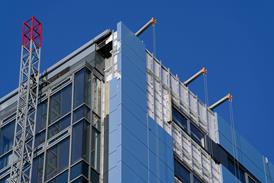Remediation surveys prompted by post-Grenfell legislation are exposing other defects
Since the ��Ȧ Safety Act 2022 (BSA) came into force on 1 April 2023 following the Grenfell Tower tragedy, property professionals managing apartment blocks under their charge that fall within the definition of “relevant buildings” have been commissioning rigorous surveys to remediate “relevant defects” which cause “building safety risks”.

An unexpected result has been a deluge of latent defect cases uncovered by these surveys, which – while unrelated to the spread of fire or the risk of collapse of buildings – may still lead to remediation through the back door under the BSA.
What is a latent defect?
A latent defect is a concealed flaw in workmanship, design or material, which may not manifest itself for many years. Examples of latent defects that have been uncovered include: foundations constructed to an insufficient depth; undercroft parking with inadequate steel support within concrete pillars; poor damp-proofing; and inadequate membranes on the flat roof of an apartment building leading to water ingress occurring.
>>Also read: The Procurement Act is here - what does it mean for the construction industry?
>>Also read: Get your clause into it – contractual responsibility for specific risks
Latent defects often arise from breaches of the original construction contract between a developer and a contractor, or from the negligence of a consultant – such as an architect or structural engineer – in the advice provided to a developer.
Responsibility has shifted
Prior to the BSA, in the absence of a collateral warranty or a clause within a purchase contract, if a latent defect was found, lessees within an apartment block had no cause of action against a contractor or professional adviser, as they were not party to the contract. Accordingly, causes of action for latent defects were against the landlord of an apartment block and arose from landlords’ obligations of repair for retained parts within a lease.
The BSA has significantly shifted responsibility from landlords to developers, contractors and consultants
Section 1 of the Defective Premises Act 1972 (DPA) applies to work for or in connection with the provision of a dwelling. Section 2A, which was inserted by the BSA, applies to work by someone in the course of a business, to any part of an existing “relevant building” (one containing at least one dwelling). The DPA requires work to be done in a workmanlike or (as the case may be) professional manner, with proper material so that the dwelling is fit for habitation when the work is complete. This means the BSA has significantly shifted responsibility from landlords to developers, contractors and consultants.
Potential claims
The DPA does not prescribe a definition for “fit for habitation”. However, defective foundations, inadequate structural support, poor damp-proofing and defectively constructed roofs have all led to successful claims. Under the DPA it is possible to recover economic loss, not just for damage to property, and successors in title to the original leaseholder can claim.
The DPA prescribes a 15-year limitation period for claims accruing under section 1 or section 2A after 28 June 2022. Work completed before 28 June 2022 has a 30-year limitation period for section 1 claims (for the provision of a dwelling). Claims accrue from the date that the work was completed.
Under the DPA it is possible to recover economic loss, not just for damage to property, and successors in title to the original leaseholder can claim
It is also possible for claims to be made against the manufacturers and sellers of construction products for single dwellings and any building containing two or more dwellings (under sections 147-149 BSA).
The dwelling must be unfit for habitation, and that must have been caused by a person failing to comply with a construction product requirement; or from making a misleading statement in relation to the marketing or supply of the product; or manufacturing a construction product that is inherently defective. There is a 15-year prospective limitation period for claims in connection with construction products causing issues with building safety.
Avoiding litigation
The provision of expert evidence by surveyors commissioned by professionals managing apartment blocks has been key to the remediation of latent defects. It can also help facilitate a negotiated solution, thereby avoiding the need for all parties to enter into costly litigation.
Key here is for the expert report to establish a clear cause of action against a prospective defendant and prescribe liability for each head of damage in a Scott schedule quantifying each head of loss, which gives all parties objective, substantiated evidence to negotiate a settlement.
Pragmatic landlords, developers and consultants would be well advised to take advantage of this. Not only does it eliminate the costs and stress of lengthy legal battles, it also eliminates the risk of potential adverse PR for defendants seeking to avoid liability for latent defects that ultimately put the safety of building occupiers at risk.
Mustafa Sidki is a partner at Thackray Williams, specialising in construction litigation























No comments yet